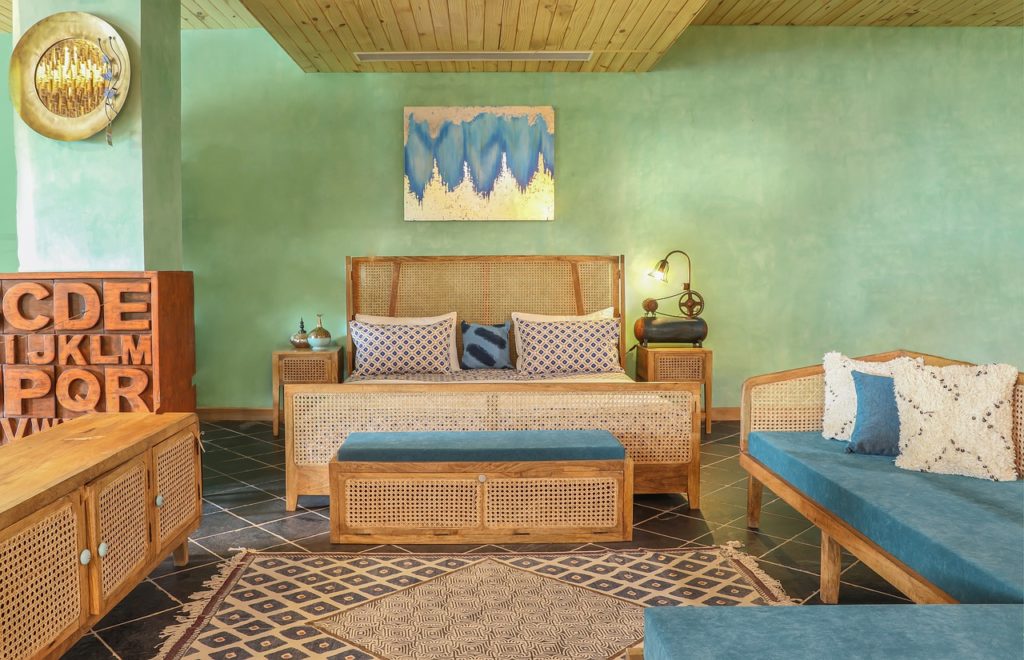When you’re starting to become keen on saving the planet, sustainability is probably your first concern when buying land for sale around a major or suburban city. After all, urban areas are known for having high levels of pollution, which further degrades air quality and health among residents.
And since building a home also leaves an environmental impact, it seems nearly impossible to live eco-friendly in a big city. But that couldn’t be further from the truth. The little changes you make in your lifestyle can already bring a big difference to the environment. Foregoing plastic packaging, for one, will significantly reduce the amount of plastic waste collected from your area.
But you can kick that effort up a notch by making your home itself more eco-friendly. It would be an ingenious way to make up for the environmental impact it left while it’s being built. Luckily, choosing sustainable furnishings has become more exciting than ever, thanks to affordable finds and big brands.
Without further ado, here are the basics of designing your home eco-friendly:
Flooring

You have a range of options for eco-friendly and cost-effective flooring. Here the most durable, appealing, and green materials:
-
Hardwood
Hardwood floors are a natural and highly-renewable product. They’re also biodegradable and can be recycled or used as fuel at the end of their lives. But not all hardwood sources are sustainable. If you live in America, make sure that the brand you’re buying from obtains their wood from forests certified and well-managed by the Forest Stewardship Council.
-
Recycled Hardwood
These are basically old hardwood floors that are reused. As such, they have a worn look, which is aesthetically-pleasing and unique for some. They cut down waste and prevent other trees from being chopped down, so they might be a more sustainable choice than brand-new hardwood. However, make sure that your recycled hardwood wasn’t treated with toxic chemicals over the course of its life.
-
Natural Stone
Stone is also a natural and highly-renewable product. The only drawback is that they’re harder to transport because of their weight, making them have a higher carbon footprint.
-
Bamboo
Bamboo is fast-growing with a shorter harvest cycle, so they’re rather more renewable than other materials. However, most bamboos are produced in the Pacific rim, making their importation a little harsh on the environment. Plus, some bamboos are made with formaldehyde.
-
Eco-friendly Carpeting
If the carpet is widely available in your area, it would be one of your best options. Narrow your list to wool, jute, and seagrass, all of which natural materials. Spray your chosen carpet with a non-toxic green carpet finish.
Furniture
Making and manufacturing furniture also leaves a considerable environmental impact, but thankfully, designers and esteemed brands are starting to offer sustainable product lines.
-
Charlotte Kidger’s Industrial Crafts
Check this out if you’re into the industrial design aesthetic. It is a collection of multicolored tables and sculptures that’s reminiscent of sand art creations. What makes them eco-friendly is that they keep polyurethane dust out of landfills.
-
Etsy Reclaimed Furniture
If you’re on a budget, Etsy also offers a range of affordable and eco-friendly furniture. They work with sellers who reclaim and upcycle old furniture, including one-of-a-kind pieces. Consider buying your statement pieces from them, such as coffee tables and couches.
-
Ecobirdy’s Chair Charlie
If you have kids, did you know that 80% of their plastic toys can end up in the ocean? For that reason, Ecobirdy came up with the idea to collect and recycle them, then turn them into cute, nontoxic kiddie furniture, such as the Chair Charlie.
-
Burrow Couch
Burrow offers a range of high-quality sofas and sectionals that are all eco-friendly and made in the USA. They’re shipped in 100% recyclable cardboard boxes, and they don’t contain lead, formaldehyde, and other toxic chemicals.
-
Pipeline Project’s Colored Dining Chair
Play with color and consider Pipeline Project’s colored dining chairs, which are made from used PVC pipes and paired with solid oak.
-
The Citizenry Furniture
For highly unique pieces, choose among The Citizenry’s products, which are handcrafted by artisans from all over the world. You don’t just save the planet, but support ethical labor, too.
Lighting
Light fixtures aren’t just all about the bulb. In lamps, for example, you should also consider how they’re made, and which materials are used. Like in flooring and furniture, it’s also wise to narrow your options to lamps made of recycled, natural, or reused materials.
-
LED
LED doesn’t contain mercury, unlike fluorescent. But to further green your LED lights, plug them into a power strip, which you should switch off when not in use.
-
Daylight
This refers to natural light, a.k.a. the best source of light. During the day, keep your window treatments drawn open to let plenty of daylight in, and save energy.
Because of these abundant options, you’d certainly have a good and easy time designing your home eco-friendly. Start planning your dream design now, and save more forests and oceans.

